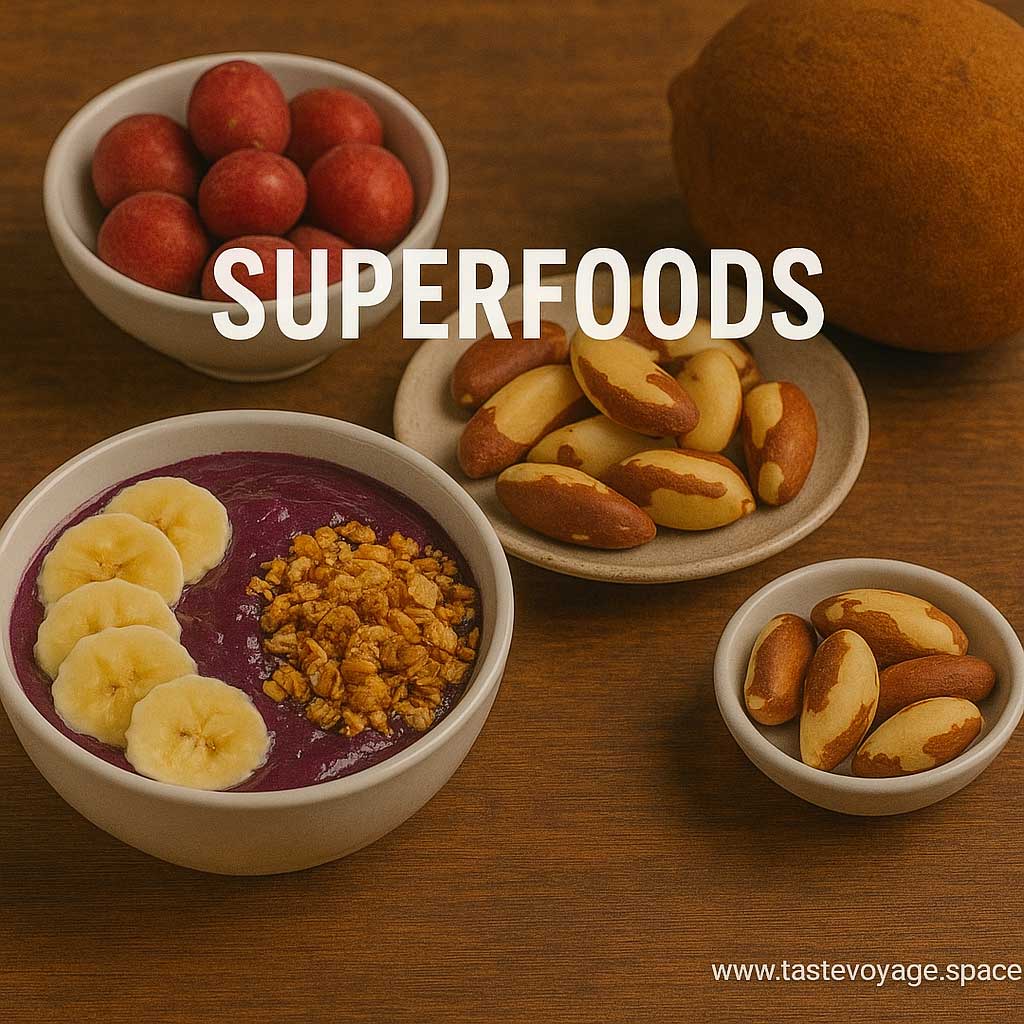Pitanga Benefits: The Brazilian Cherry Superfruit’s Secrets
Travel the World Through Food >> Brazilian Cuisine>>Superfoods>> Pitanga Benefits: The Brazilian Cherry Superfruit’s Secrets
Pitanga Benefits: The Brazilian Cherry Superfruit’s Secrets
Discovering Pitanga: The Brazilian Cherry Superfruit
The Pitanga, also known as the Brazilian cherry, is a vibrant and beloved fruit native to Brazil. Known for its striking appearance and refreshing flavor, this superfruit holds a special place in Brazilian culinary traditions. Its bright red or orange skin, paired with a sweet yet tangy taste, makes it a favorite ingredient in many traditional dishes and beverages. Exploring the cultural significance of Pitanga reveals its deep roots in Brazilian food culture and its role as a symbol of natural bounty.
Cultural Roots and Heritage
Pitanga’s cultural value runs deep in Brazil. It is a fruit that has been enjoyed for generations by indigenous communities and local farmers alike. For many Brazilians, the Pitanga symbolizes the richness of local ecosystems and the importance of native plants in daily life. Its availability across various regions makes it a staple in markets and street stalls, embodying a strong connection to the land and nature.
In Brazilian folklore and celebrations, Pitanga often features as a natural ingredient that represents vitality and tradition. Its bright color and bold flavor echo the lively spirit of Brazilian culture, adding a sense of festivity to both everyday meals and Special Occasions.
Culinary Significance and Uses
Culinary-wise, Pitanga is celebrated for its versatility. It is used in a variety of traditional preparations, from fresh fruit salads and jams to refreshing beverages. Its unique flavor lends itself well to making juices, smoothies, and even liqueurs. Many Brazilian households incorporate Pitanga into desserts, where its vibrant color and flavor enhance the visual appeal and taste profile.
Beyond its use in sweet dishes, Pitanga also plays a role in savory recipes, adding a burst of flavor to sauces and marinades. The fruit’s natural acidity balances well with other ingredients, making it a valuable component in the culinary repertoire of Brazilian Cuisine.
The Symbol of Nature’s Bounty
The Pitanga’s significance extends beyond the kitchen. It is often seen as a symbol of nature’s bounty and the importance of preserving native flora. Its health benefits, rich in antioxidants and vitamins, have increased its popularity as a superfruit, recognized for promoting well-being and vitality.
In many regions, harvesting Pitanga is a communal activity, fostering social bonds and sharing traditions. The fruit’s seasonal availability encourages local markets to flourish, supporting small-scale farmers and contributing to regional economies.
Embracing the Pitanga
In essence, Pitanga is more than just a fruit; it is a vibrant expression of Brazilian culinary heritage and cultural identity. Its bright appearance and delightful flavor continue to inspire chefs and home cooks alike. Celebrating Pitanga invites us to appreciate the natural flavors and traditions that define Brazilian food culture.
Whether enjoyed fresh, in drinks, or as part of Traditional Recipes, Pitanga offers a delightful taste of Brazil’s rich natural landscape. Its cultural and culinary significance highlights the beauty and diversity of native superfruits, making it a true treasure in the world of food.
By exploring the many facets of Pitanga, we uncover a fruit that embodies vitality, tradition, and the rich tapestry of Brazil’s culinary landscape. Its place in food culture is well-earned, and its vibrant spirit invites all to enjoy a taste of Brazil’s natural heritage.
